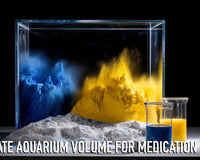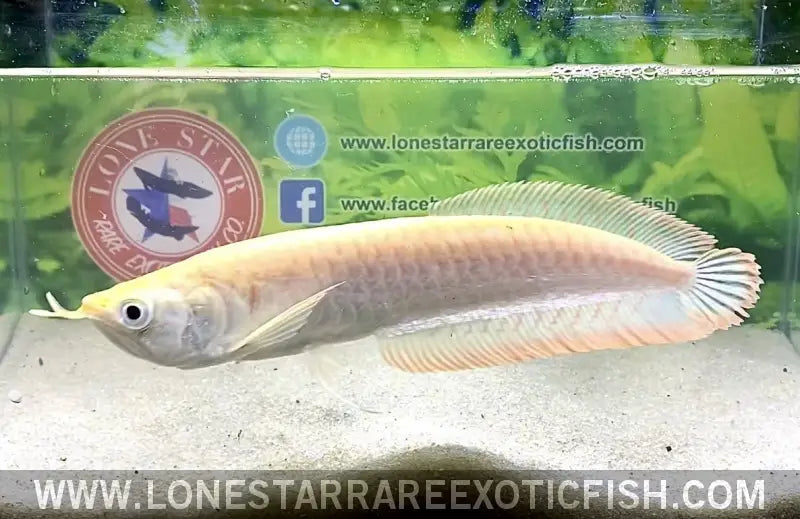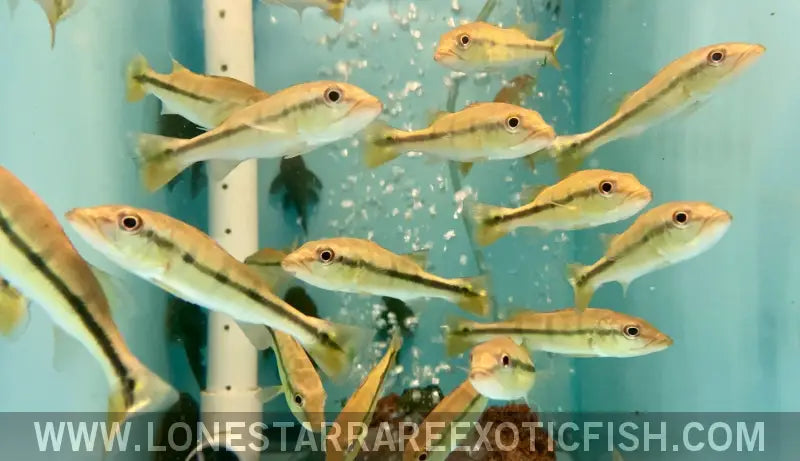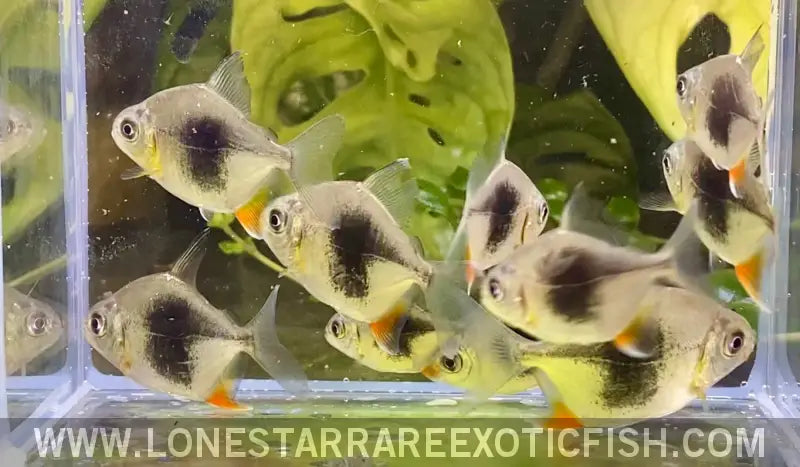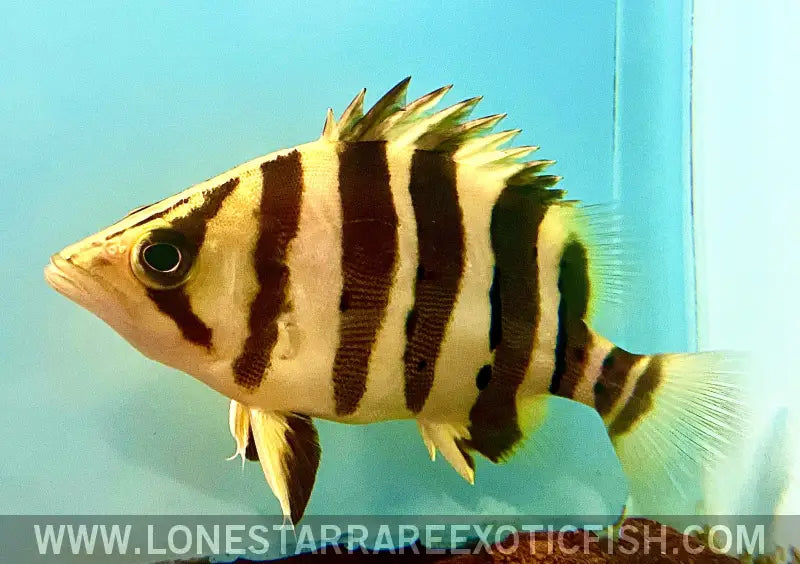In the vibrant tapestry of aquatic life, color plays a pivotal role, conveying information, ensuring survival, and captivating observers. Among the various elements influencing this brilliance, astaxanthin, a naturally occurring carotenoid, has emerged as a subject of fascination, debate, and intense research in the realm of freshwater aquaculture. Often overshadowed by its more famous carotenoid cousins, like beta-carotene, astaxanthin is now stepping into the limelight, revealing its multifaceted significance.
But what exactly is astaxanthin? Why has it captured the attention of scientists, fish breeders, and aquarium enthusiasts alike? Is it merely a tool for aesthetic enhancement, or does its influence run deeper, touching the very health and vitality of aquatic inhabitants?
As we dive into this exploration, we'll unravel the intricate dance of chemistry, biology, and ecology surrounding astaxanthin. From its origins in the microscopic world of algae to its potential impacts on the majestic displays in home aquariums, this journey delves into the heart of astaxanthin's role in the freshwater aquatic world. Whether you're an aquarist seeking to enhance the vibrancy of your fish or a curious soul intrigued by the interplay of nature and science, this comprehensive guide aims to illuminate, inform, and inspire.
1. Introduction to Astaxanthin: Beyond the Color, Unraveling a Marine Marvel
The mention of astaxanthin might conjure visions of vibrant-colored marine organisms, but the tale of this carotenoid goes beyond superficial hues. Recognized in the scientific community for its remarkable properties and physiological benefits, astaxanthin stands as a testament to nature's ingenuity.
Chemical Properties:
-
Structural Distinctiveness: Astaxanthin, as a xanthophyll carotenoid, possesses oxygenated groups at each end of its molecule. This structure not only gives it its characteristic color but also underpins its strong antioxidant capabilities. Its extended conjugated double bonds are particularly efficient at quenching reactive oxygen species, offering protection against cellular damage.
-
Stability: Astaxanthin is more stable than other carotenoids in the face of heat and light. This stability is beneficial for maintaining its integrity during the storage and processing of fish foods.
Evolutionary Role:
In the wild, the presence of astaxanthin provides evolutionary advantages. For example:
-
Camouflage & Mating: The red and pink hues derived from astaxanthin can serve as camouflage for certain marine organisms, blending them into the reddish underwater landscapes. For some species, vibrant coloration is also a sign of health and vitality, playing a role in mate selection.
-
UV Protection: Astaxanthin's antioxidant properties extend to protection against ultraviolet (UV) radiation. Organisms rich in astaxanthin, like the microalgae Haematococcus pluvialis, leverage it as a shield against harmful UV rays, preventing cellular damage.
-
Stress Response: In algae, astaxanthin production ramps up as a defense mechanism when exposed to environmental stressors like nutrient deprivation or heightened salinity. This "stress response" is beneficial, enabling the algae to survive and thrive in fluctuating conditions.
Industrial Significance:
Beyond its role in nature, astaxanthin has garnered industrial interest:
-
Cosmetics & Skincare: Due to its antioxidant properties and potential benefits for skin health, astaxanthin has found its way into various cosmetic products, promoting skin elasticity and combatting signs of aging.
-
Dietary Supplements: Recognizing its potential health benefits for humans, astaxanthin is marketed as a dietary supplement, with claims of boosting immunity, improving eye health, and reducing inflammation.
While its significance spans various sectors, in the context of freshwater aquariums, astaxanthin's role in dietary enhancement and fish health remains central. Recognizing its origins and multi-faceted benefits sets the stage for understanding its nuanced application in aquaculture.
2. Why Astaxanthin? A Multidimensional Exploration of Its Benefits
Astaxanthin's acclaim in aquaculture isn't just the product of its striking color enhancement abilities; it's the convergence of several health and wellness attributes that make it a sought-after component in fish diets.
Aesthetics through Enhanced Pigmentation:
Astaxanthin's color enhancement isn't merely about beautifying fish. It also:
-
Mimics Natural Diets: Many freshwater fish species, in their natural habitats, consume diets rich in carotenoids. Including astaxanthin-rich foods in aquarium settings is an attempt to mimic these natural dietary patterns.
-
Signifies Health: In the wild, brighter coloration often indicates a fish's health and vitality. Astaxanthin supplementation can therefore make fish not only more visually appealing but also signify their well-being.
Robust Antioxidant Defense:
Astaxanthin's antioxidant prowess is unparalleled and carries multifaceted benefits:
-
Cellular Defense: The unique molecular structure of astaxanthin allows it to neutralize multiple free radicals simultaneously, providing robust protection against oxidative damage, which can lead to cellular degeneration and premature aging in fish.
-
DNA Protection: Oxidative stress can cause mutations in DNA. Astaxanthin's protective layer safeguards DNA strands, ensuring genetic integrity and reducing the risk of diseases.
Fortifying Immune Mechanisms:
Beyond its antioxidant capacities, astaxanthin plays a pivotal role in enhancing fish immunity:
-
White Blood Cell Activation: Astaxanthin can stimulate the proliferation and activity of lymphocytes, a type of white blood cell, thereby enhancing the fish's innate ability to ward off infections.
-
Antibody Production: Preliminary research suggests that astaxanthin might stimulate the production of antibodies in fish, bolstering their adaptive immunity against specific pathogens.
Reproductive Advantages:
Astaxanthin's influence extends to the reproductive health of fish, with several noteworthy benefits:
-
Egg and Sperm Quality: Astaxanthin can enhance the quality of both eggs and sperm, increasing their viability. This is particularly valuable for aquarists interested in breeding fish.
-
Larval Survival: Astaxanthin supplementation in the diets of breeding fish can improve the survival rates of larvae, ensuring healthier and more robust offspring.
-
Protection against UV Radiation: For species that lay eggs in shallow waters or exposed areas, astaxanthin can provide added protection against harmful UV radiation, increasing the chances of successful hatching.
The Synergistic Effect:
Astaxanthin doesn't work in isolation. Its benefits can be amplified when combined with other vital nutrients:
-
Vitamin E and C: These vitamins, combined with astaxanthin, can create a potent antioxidant shield, with each compound complementing and enhancing the effects of the others.
-
Omega-3 Fatty Acids: Astaxanthin can work in tandem with Omega-3s to reduce inflammation and further boost immunity in fish.
3. The Source Spectrum: Natural vs. Synthetic Astaxanthin – A Comparative Analysis
The sourcing of astaxanthin isn't a mere choice between natural or synthetic; it's an intricate decision influenced by efficacy, environmental impact, cost, and availability.
Natural Astaxanthin:
-
Microalgal Reservoirs: Haematococcus pluvialis stands out as the richest source of natural astaxanthin. These green microalgae, under environmental stress, produce astaxanthin as a protective measure, accumulating it in lipid vesicles.
-
Other Marine Sources: Besides algae, organisms like krill, shrimp, and certain crustaceans contain astaxanthin, which they acquire from their diet. Some fish, notably salmon, accumulate astaxanthin in their muscles, which contributes to their distinctive color.
-
Extraction Methods: Extracting astaxanthin from natural sources involves processes like supercritical CO2 extraction, which, while being environmentally friendly, can be costly.
Synthetic Astaxanthin:
-
Chemical Synthesis: Derived primarily from petrochemical precursors, synthetic astaxanthin is produced using a series of chemical reactions. These methods are more scalable and consistent, often leading to a lower price point than natural sources.
-
Isomeric Differences: Astaxanthin molecules can exist in several isomeric forms, which are molecules with the same chemical formula but different spatial arrangements. Natural sources primarily contain the trans-isomeric form, which is believed to be more bioavailable and effective. In contrast, synthetic production results in a mix of isomers, potentially affecting its biological activity.
Environmental and Ethical Impacts:
-
Sustainability Concerns: The cultivation of Haematococcus pluvialis requires specific conditions and resources. While it can be sustainable, over-exploitation or non-sustainable farming practices can have ecological implications. On the other hand, synthetic production, relying on petrochemicals, raises concerns about fossil fuel consumption and its associated environmental footprint.
-
Carbon Footprint: Natural extraction, particularly when using sustainable energy sources and recycling water in cultivation systems, can have a lower carbon footprint compared to the energy-intensive synthetic production processes.
Quality & Purity:
-
Contaminant Risks: While natural sources run the risk of contamination from the marine environment (like heavy metals), stringent purification processes usually mitigate these. Synthetic sources, depending on the production process, might contain chemical residues or additives, which can influence the purity of the final product.
-
Standardization: Synthetic astaxanthin offers a more standardized product in terms of concentration, making it easier for manufacturers to maintain consistency in fish foods. Natural sources might exhibit slight variations based on cultivation conditions.
4. Proceeding with Prudence: Potential Pitfalls and Controversies Surrounding Astaxanthin
While the allure of astaxanthin, especially in aquaculture, is undeniable, a deeper understanding reveals certain areas of concern that aquarists and the industry at large need to navigate.
Bioavailability and Potency:
-
Isomeric Variability: Astaxanthin's various isomeric forms have different bioactivities. The naturally predominant trans-isomeric form is often seen as more bioavailable and effective. Synthetic sources, providing a mix of isomers, might not deliver the same level of efficacy in fish diets.
-
Digestibility Concerns: In certain fish species, the absorption efficiency of astaxanthin, especially synthetic variants, can vary. This implies that not all ingested astaxanthin is utilized, potentially requiring higher doses to achieve desired effects.
Environmental and Ethical Implications:
-
Resource Use: Cultivation of natural astaxanthin, especially from Haematococcus pluvialis, can be water-intensive. In regions facing water scarcity, this raises sustainability concerns.
-
Chemical Impact: The synthesis of astaxanthin, particularly its petrochemical-derived synthetic form, comes with an environmental cost. Emissions from petrochemical plants, waste generation, and the carbon footprint associated with chemical synthesis can be significant.
Over-Saturation and Aesthetic Impact:
-
Unnatural Appearances: Excessive astaxanthin can lead to hyperpigmentation in fish, leading to overly vibrant, sometimes unnatural-looking colors. This can be particularly pronounced in fish species that are not typically high in astaxanthin in their natural habitats.
-
Masking True Health: A fish's coloration can often be an indicator of its overall health. Over-supplementation might mask other health issues, giving aquarists a false sense of their fish's well-being.
Health and Dietary Balance:
-
Nutritional Overshadowing: While astaxanthin offers numerous benefits, it shouldn't dominate a fish's diet. Overemphasis can lead to deficiencies in other vital nutrients.
-
Potential Overdose: While astaxanthin is generally considered safe, like any substance, it's possible for fish to have too much. Extremely high concentrations, over extended periods, might have as yet unknown health implications.
Economic Impacts:
-
Market Dynamics: The increasing demand for natural astaxanthin, given its perceived superiority, might drive up costs. This could make aquaculture more expensive and potentially impact the pricing of ornamental fish.
-
Research Gaps: The industry is still unraveling the complete spectrum of astaxanthin's effects. There's a need for more rigorous, long-term studies, especially comparing natural versus synthetic forms in diverse aquatic settings.
5. Modern Applications and Future Research Horizons: Astaxanthin in the Spotlight
The heightened interest in astaxanthin, especially in aquaculture and ornamental fishkeeping, is reflected in the surge of research and varied applications. Aquarists, industry leaders, and scientists are collaboratively pushing boundaries to maximize the potential of this potent carotenoid.
Dosage Exploration:
-
Species-specific Needs: The ideal dosage of astaxanthin varies depending on the fish species, age, and desired outcome. For instance, species that naturally have a higher astaxanthin content in the wild may require different dosages than those that do not.
-
Breeding vs. Non-breeding: The reproductive stage of fish can influence their astaxanthin requirements. Studies suggest that broodstock might benefit from increased astaxanthin levels to support gamete quality and overall reproductive success.
Synergistic Interactions with Other Nutrients:
-
Complementing Antioxidants: Research is delving into how astaxanthin interacts with other antioxidants. There’s evidence suggesting that a combination of astaxanthin, Vitamin E, and Vitamin C might provide a comprehensive antioxidant shield, more potent than each nutrient alone.
-
Boosting Fatty Acid Benefits: Preliminary studies indicate that astaxanthin, combined with Omega-3 fatty acids, can enhance anti-inflammatory effects, boosting overall fish health and potentially reducing disease outbreaks in captive settings.
Delivery Methods in Diets:
-
Incorporation in Pellets: How astaxanthin is integrated into fish foods, be it pellets or flakes, matters. Research is exploring encapsulation techniques that protect astaxanthin from degradation, ensuring that fish receive its full benefits.
-
Live Feed Enrichment: Some aquarists and breeders are looking at enriching live feeds, such as brine shrimp or daphnia, with astaxanthin. This approach mimics natural dietary patterns, providing fish with a more organic means of accessing this carotenoid.
Understanding Long-term Impacts:
-
Lifespan Studies: Given the longevity of certain fish species, understanding the prolonged effects of astaxanthin is crucial. Research is underway to determine if consistent astaxanthin supplementation impacts lifespan, disease resistance, and overall vitality over a fish’s entire life cycle.
-
Environmental Interactions: How does astaxanthin interact with different water parameters? Does pH, hardness, or temperature influence its bioavailability? These questions are central to ongoing research, aiming to provide holistic guidelines for astaxanthin use.
Ethical and Sustainable Production:
-
Green Extraction Techniques: With the increasing demand for natural astaxanthin, scientists are exploring sustainable extraction methods that minimize resource use and environmental impact.
-
Bioengineered Alternatives: There’s budding interest in leveraging biotechnology to produce astaxanthin. By genetically modifying certain yeasts or bacteria, it might be possible to create a sustainable, bioengineered source of astaxanthin that bridges the gap between natural extraction and full-blown chemical synthesis.
6. Navigating the Astaxanthin Landscape: Recommendations for the Informed Aquarist
Astaxanthin, with its array of benefits and complexities, requires aquarists to adopt a measured and informed approach. From sourcing to dosage determination, the following guidelines and insights aim to provide a roadmap for its optimal utilization.
Quality Assurance and Sourcing:
-
Certified Suppliers: When selecting fish foods or supplements, prioritize those from certified suppliers or brands known for their rigorous quality control standards.
-
Natural vs. Synthetic Disclosure: Manufacturers should clearly label whether the astaxanthin used is natural or synthetic. This transparency allows aquarists to make informed decisions aligned with their preferences and the specific needs of their fish.
-
Environmental Credentials: Given the sustainability concerns, particularly with natural astaxanthin production, opting for brands that adhere to environmentally friendly practices can be a responsible choice.
Tailored Dosages:
-
Consultation with Experts: Before introducing astaxanthin-rich foods or supplements, it might be beneficial to consult with ichthyologists or seasoned aquarists who have experience with the specific fish species in question.
-
Gradual Introduction: Start with a lower dosage and gradually increase, observing fish behavior, coloration, and overall health. This step-by-step approach allows for adjustments and ensures that fish aren't overwhelmed.
Monitoring and Observation:
-
Regular Health Checks: Beyond mere color enhancement, monitor fish for signs of improved health, vitality, and reduced stress. Conversely, keep an eye out for any adverse reactions or health declines.
-
Water Parameter Interactions: Regularly test aquarium water parameters, noting any shifts in pH, hardness, or other factors that might influence astaxanthin's efficacy.
Balanced Diet Integration:
-
Variety is Key: While astaxanthin offers multiple benefits, it should be part of a varied and balanced diet. Ensure fish receive a range of nutrients, including proteins, fatty acids, and other essential vitamins.
-
Research-Driven Adjustments: Stay abreast of the latest research regarding astaxanthin. As new findings emerge, be open to tweaking dietary regimens accordingly.
Ethical Considerations:
- Consumer Responsibility: With the power of purchase, aquarists can influence market dynamics. By supporting brands and products that prioritize ethical and sustainable astaxanthin sourcing, consumers can drive positive industry changes.
Conclusion
Astaxanthin, often dubbed the 'king of carotenoids', stands as a testament to nature's profound ability to foster health and vibrancy in aquatic life. From its fundamental chemistry to its myriad applications in modern aquaculture, its journey illuminates the dynamic interplay between nature, science, and responsible aquaristic practices.
Its undeniable allure stems not just from the visual enhancement it bestows upon fish, but from a multifaceted array of health benefits that span cellular protection, immune fortification, and reproductive enhancement. Yet, like any element introduced into the delicate ecosystem of an aquarium, astaxanthin requires a deep understanding and judicious use. Whether derived from the green blush of Haematococcus pluvialis or synthesized in state-of-the-art laboratories, its source, purity, and dosage matter profoundly.
While the aquaculture industry continues to innovate and refine its approaches, aquarists—be they hobbyists or professionals—stand at the forefront of ensuring that the astaxanthin narrative is one of balance, sustainability, and genuine well-being for their aquatic charges. As research deepens and the global aquaristic community collaborates, the goal remains clear: to harness astaxanthin's full potential in a manner that respects both the vibrancy of individual fish and the holistic health of the aquatic ecosystems they inhabit.
In a world increasingly turning to nature for solutions, astaxanthin serves as a beacon, reminding us of the wonders of the aquatic world and our responsibility to engage with it knowledgeably and ethically.



